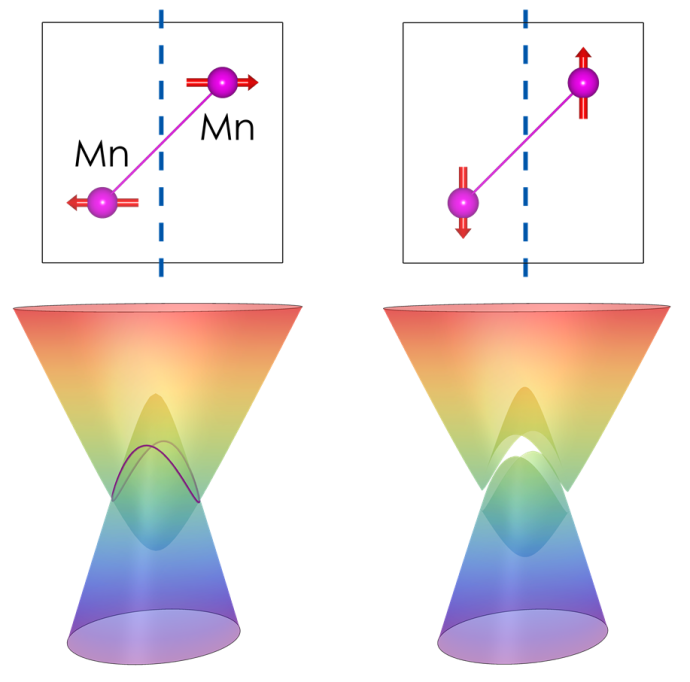Topological antiferromagnetic spintronics is an emerging field of research where topological properties of a material are coupled to the antiferromagnetic ordering. Topological properties involve non-trivial electronic states, such as Dirac nodal lines, which are protected by the structural and magnetic symmetry of the material.
Nebraska MRSEC researchers have theoretically predicted that antiferromagnetic metal MnPd2 supports an electrically controlled Dirac nodal line at room temperature. They showed that MnPd2 exhibits the required symmetry, which allows the reorientation of the antiferromagnetic order parameter by electrical current, and simultaneously holds a Dirac nodal line across the required energy range needed to affect functional behavior of this material. This reorientation changes the magnetic space group symmetry, producing an energy gap in the Dirac nodal line and thus changing spin-dependent transport properties. This prediction offers, for the first time, a viable material which can be employed in topological antiferromagnetic spintronics.
D.-F. Shao, G. Gurung, S.-H. Zhang, and E. Y. Tsymbal, “Dirac nodal line metal for topological antiferromagnetic spintronics,” Physical Review Letters 122, 077203 (2019).

Switching of the Dirac nodal line state from degenerate to gapped (bottom panels) of by reorientation of the antiferromagnetic order parameter (indicated by arrows on the top panels).